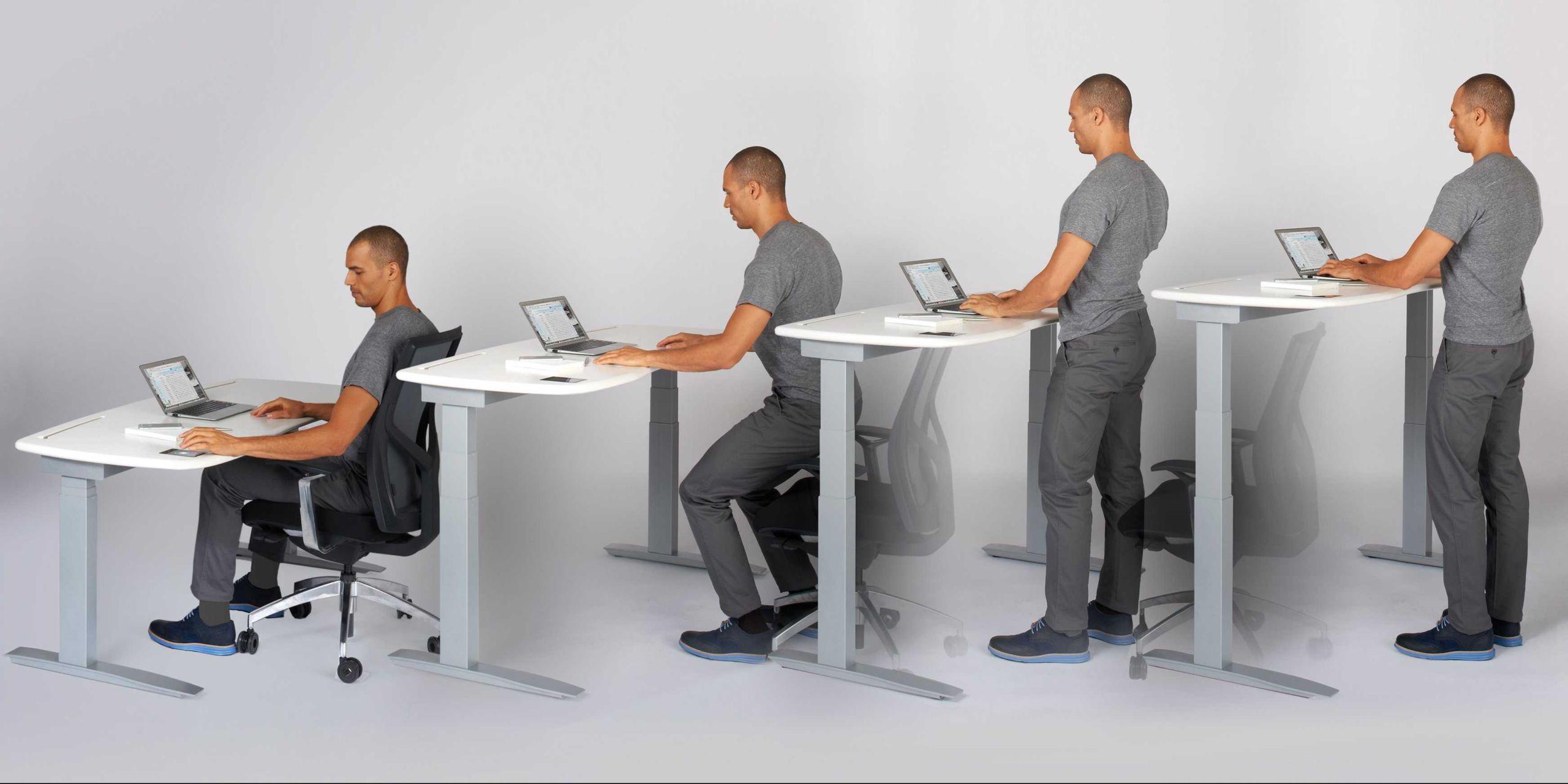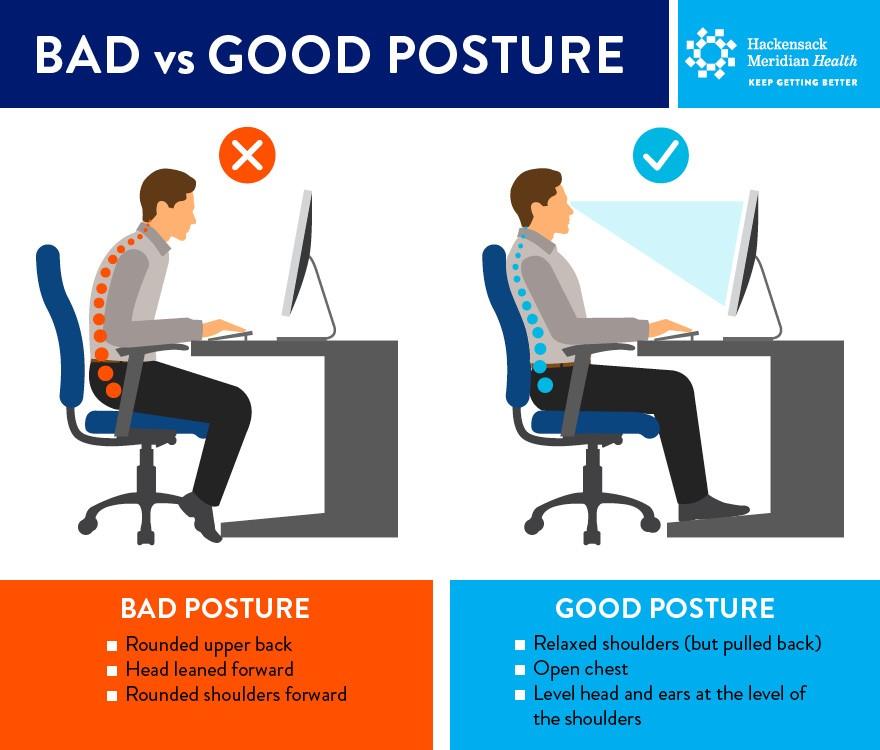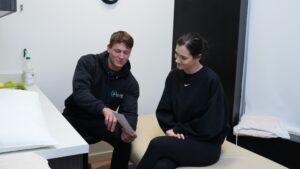Why are you feeling neck and back pain at your desk? You may not realize it, but the culprit may be as simple as your workspace setup.

After a long day of working at your desk, it isn’t uncommon to feel pain and aches in your neck when you get up at the end of your day. Taking temporary breaks throughout the day for a quick walk or stretch can be very helpful. However, many people working demanding 9-5 jobs don’t have that option. This means spending nearly eight hours sitting in one position. This is especially harmful if you are sitting incorrectly.
Whether you’re working from home or an office, sitting improperly all day can be detrimental to your health. Here are a few tips to combat this problem.
Desks

If your desk isn’t the proper height, you may be putting unnecessary stress and strain on your neck and back.
If your desk is too low, you may be slumping to look downwards at your screen, and to reach your mouse and keyboard. When your neck is bent, your head exerts force onto your neck and your muscles contract to hold your head up. The further you bend your neck, the more weight your neck needs to support. This can lead to muscle spasms, neck pain, and headaches.
If your desk is too high, you may be stressing your shoulder and arm muscles. Elevating your arms to reach your keyboard and mouse means that your shoulders will be shrugged. This puts strain and tension on your neck, shoulders, and upper back. If your desk is too high, you may be bending your neck backwards to be able to see your monitor. This position may create tension at the base of your skull and lead to headaches or neck cricks.
Ideally, you want your desk height to match the level of your elbows when your arms are bent. If your chair has adjustable armrests, they should be adjusted so that your elbows are comfortably bent at a 90 degree angle. A wrist rest for your keyboard can help keep your wrists straight and at the right level. You also want your computer monitor to be close to eye level, or a little bit lower.
Using your height, you can calculate the proper height for your desk here.
Posture and sitting

If you spend most of your workday sitting, it is important to invest in a proper office chair. For proper support, your chair should have a full back with lumbar support that extends at least to your shoulders. It should also be adjustable for height, tilt, and seat depth.
So how should you sit? Contrary to popular belief, you shouldn’t be sitting completely straight at a 90-degree angle. When you’re sitting with your back this straight, you are putting unnecessary force on your lower back, and your neck muscles contract to hold your head up. This may end up causing strain in your neck and back. You want to be sitting in a slightly reclined posture, closer to a 100-degree angle. In this position, there is less force on your back and the muscles in your neck don’t need to work as hard to keep your head up.
Your feet should both be placed flat on the ground. If your legs aren’t long enough to reach the ground, consider adding a footrest or stool under your desk.
Exercises

Here are some easy exercises to prevent and relieve neck pain that can easily be done at your desk.
Shoulder shrugs
- Gently lift your shoulders towards your ears
- Let them slowly fall
- You should feel tension release as your shoulders fall
Neck rotations
- Keep your head upright and gently turn your head from side to side.
- As you turn your head, try to move it past your shoulder.
- You should feel the muscles on the outside of your neck gradually stretching
Shoulder extensions
- Hold both arms above your head.
- Clasp your hands together with your palms facing upwards.
- Push your arms up
- You should feel your shoulders stretching.







